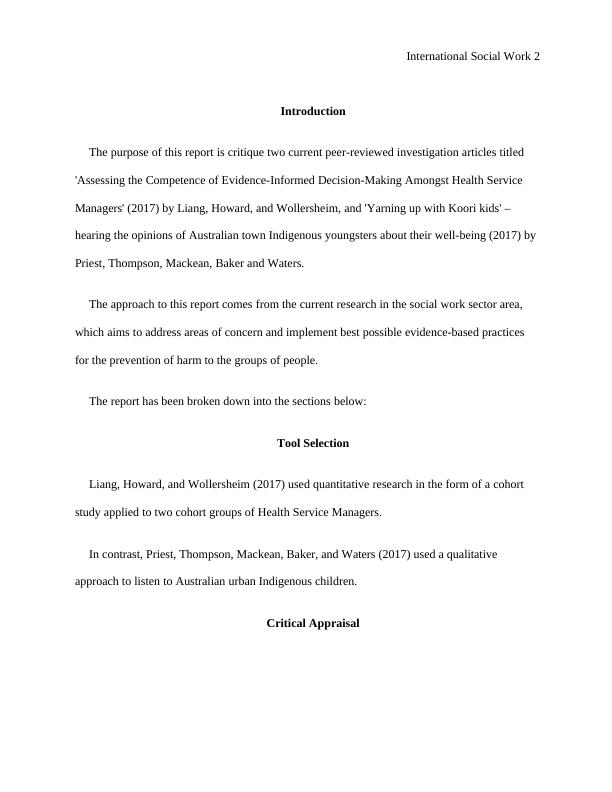Assessing the Competence of Evidence-Informed Decision-Making Amongst Health Service Managers
Added on 2022-10-13
8 Pages1723 Words7 Views
End of preview
Want to access all the pages? Upload your documents or become a member.
Critical Appraisal of Qualitative and Quantitative Papers
|18
|3918
|336
Critical Appraisal of Health Practice Articles
|16
|4727
|125
Critical Appraisal of Research Methodology
|16
|3741
|171
Critical elements drawn via appraising a quantitative research article by Tuokko et al
|5
|1075
|173
Critical Appraisal of Two Journal Articles on Mental Health and Evidence Informed Decision Making
|9
|3707
|406
Effectiveness of Yoga for Post-Traumatic Stress Disorder: A Critical Review
|8
|2007
|361



